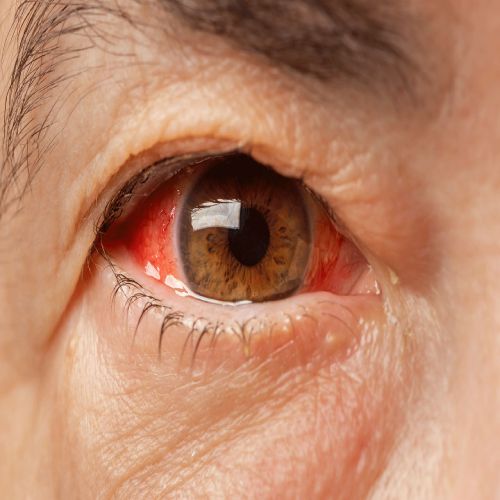About Glaucoma
Glaucoma is a group of eye conditions that damage the optic nerve, often associated with increased intraocular pressure. This damage can lead to vision loss and, if untreated, blindness. Early detection and treatment are crucial for preserving vision.
Symptoms of Glaucoma
- Gradual loss of peripheral
- Tunnel vision
- Blurred vision
- Severe eye pain
- Eye redness
- Halos around lights
- Headaches
- Nausea and vomiting (in acute angle-closure glaucoma)
- Hazy or cloudy vision
- Increased intraocular pressure

Causes of Glaucoma
- Increased intraocular pressure (IOP): The most common cause, due to poor drainage of fluid (aqueous humor) in the eye.
- Age: Risk increases significantly after the age of 60.
- Genetics: Family history of glaucoma increases the risk.
- Eye injury or trauma: Can lead to secondary glaucoma by damaging the eye’s drainage system.
- Prolonged use of corticosteroids: Long-term use, especially in eye drops, can increase IOP.
- Medical conditions: Diseases like diabetes, hypertension, and heart disease are linked to a higher risk of glaucoma.
- Thin corneas: People with thinner corneas may have an increased risk of developing glaucoma.
- Blocked or damaged drainage channels: This leads to fluid buildup, increasing IOP and damaging the optic nerve.

Our Glaucoma Treatment Options
Cataract Surgery: This is the primary treatment for cataracts. The cloudy lens is removed and replaced with a clear, artificial intraocular lens (IOL). This procedure is usually quick and performed on an outpatient basis.
Pre-Surgical Evaluation: Comprehensive eye exams to assess the cataract’s severity and the best type of IOL for the patient’s needs.
Post-Operative Care: Includes follow-up visits to ensure proper healing, prescription of eye drops or medications to prevent infection and reduce inflammation, and guidance on post-surgery activities and care.
Lens Implants: Various types of intraocular lenses are available, including monofocal, multifocal, and toric lenses, tailored to correct vision problems and reduce dependence on glasses.
Management of Complications: Addressing any potential complications such as infection, inflammation, or secondary cataracts (posterior capsule opacification) through additional treatments or procedures.
Educational Counseling: Providing patients with information about cataracts, the surgical process, and recovery to ensure they are well-informed and prepared.
When You Need
Treatment Glaucoma



Elevated Eye Pressure (Intraocular Pressure):
- High IOP Detected: If an eye exam reveals that your intraocular pressure is higher than normal, you may need treatment to lower it, even if you don’t have any noticeable symptoms.
- Monitoring in High-Risk Individuals: If you are at high risk for glaucoma (due to age, family history, or other factors), your eye doctor may start treatment based on elevated eye pressure alone.
Early Detection of Glaucoma (Even Without Symptoms):
- Pre-Symptomatic Stage: Since early glaucoma, particularly open-angle glaucoma, has no obvious symptoms, regular eye exams are crucial. If diagnosed early, treatment should begin immediately to prevent further damage.
- Family History: If you have a family history of glaucoma, your doctor may recommend treatment or close monitoring even if you haven’t yet developed noticeable symptoms.
Vision Loss or Changes:
- Peripheral Vision Loss: If you start to experience loss of peripheral (side) vision, this may indicate that glaucoma is progressing, and treatment is necessary to prevent further vision deterioration.
- Blurry or Cloudy Vision: Any changes in vision, such as blurriness or cloudiness, especially if combined with high IOP, require immediate treatment.
Frequently Asked Questions
Risk factors for glaucoma include:
- Age (over 60 years old)
- Family history of glaucoma
- High intraocular pressure (IOP)
Glaucoma is diagnosed through comprehensive eye exams, which may include:
- Tonometry: Measures intraocular pressure.
- Ophthalmoscopy: Examines the optic nerve for signs of damage.
- Perimetry (Visual field test): Assesses peripheral vision.
There is no cure for glaucoma, but with early diagnosis and proper treatment, it can be managed to prevent further vision loss. Treatment can control intraocular pressure and slow the progression of the disease.
If untreated, glaucoma can cause permanent damage to the optic nerve and lead to complete blindness. However, with early detection and treatment, most people with glaucoma can retain useful vision throughout their lives.
24 / 7 HOURS SERVICE
